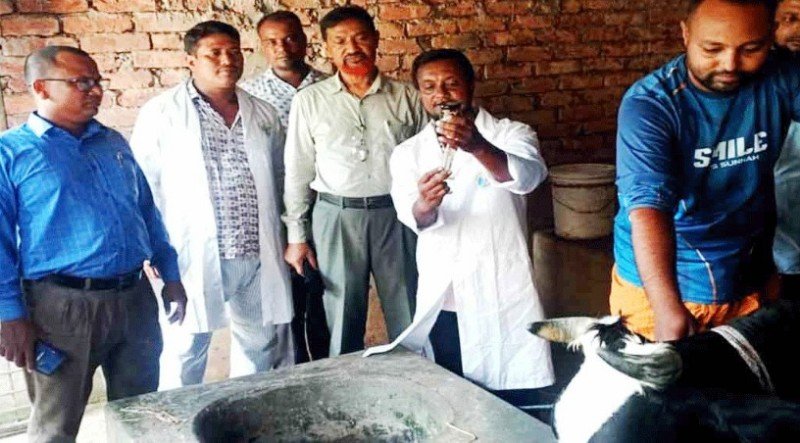
The number of confirmed anthrax cases in Rangpur district has risen to 17, with four new infections reported across Kaunia, Pirgachha, and Mithapukur upazilas, local health officials said Thursday.
According to Dr Shaheen Sultana, civil surgeon of Rangpur, the district has so far received 23 suspected cases, of which 17 have tested positive for anthrax.
The outbreak began in Pirgachha, where 13 cases were detected earlier, and two people died in July and September after showing symptoms of the disease.
IEDCR confirms human and animal infections
A team from the Institute of Epidemiology, Disease Control and Research (IEDCR) visited Pirgachha on September 13 and 14, collecting samples from 18 suspected patients. Thirteen of those tested positive for anthrax.
Officials also confirmed that livestock in the affected areas had tested positive for the disease, indicating animal-to-human transmission.
How anthrax spreads
Health experts have warned that anthrax does not spread from person to person, but humans can contract it by handling or consuming infected animals or animal products, such as meat, hides, bones, or blood.
The most common symptoms in humans include skin lesions and ulcers, though more severe forms can affect the lungs or digestive system if spores are inhaled or ingested.
Mass vaccination underway
In response to the outbreak, mass livestock vaccination drives have been launched in Rangpur.
The District Livestock Office reported that since August 26, more than 165,000 animals — including cattle, goats, and sheep — have been vaccinated across Pirgachha, Kaunia, Mithapukur, and Rangpur Sadar upazilas.
Livestock officials have also stepped up surveillance and awareness campaigns to reduce the risk of further transmission.
Authorities urge residents in the affected areas to avoid contact with sick or dead animals and report any suspected symptoms in humans or livestock to the nearest health or veterinary office immediately.
 Weekly Bangla Mirror | Bangla Mirror, Bangladeshi news in UK, bangla mirror news
Weekly Bangla Mirror | Bangla Mirror, Bangladeshi news in UK, bangla mirror news







